牛津译林版(2019)必修 第三册Unit 3 The world online Integrated skills课件(共20张PPT)
文档属性
| 名称 | 牛津译林版(2019)必修 第三册Unit 3 The world online Integrated skills课件(共20张PPT) |
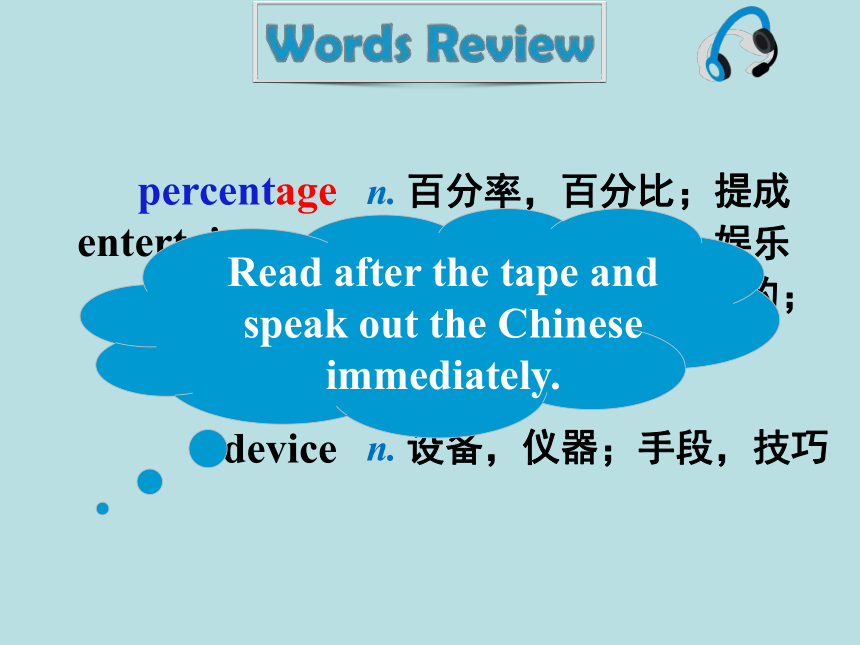
|
|
| 格式 | ppt | ||
| 文件大小 | 2.5MB | ||
| 资源类型 | 教案 | ||
| 版本资源 | 牛津译林版(2019) | ||
| 科目 | 英语 | ||
| 更新时间 | 2023-03-19 21:56:37 | ||
图片预览

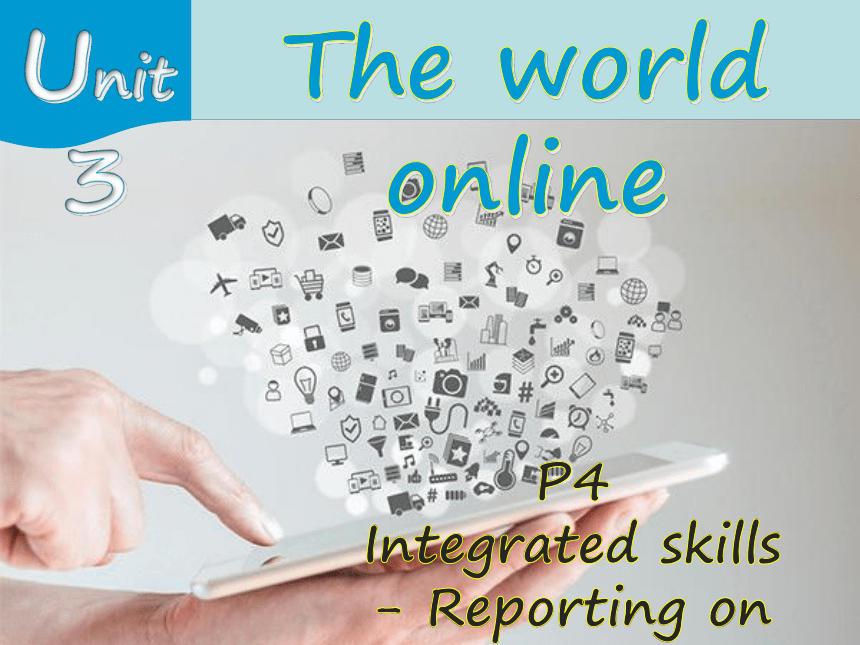

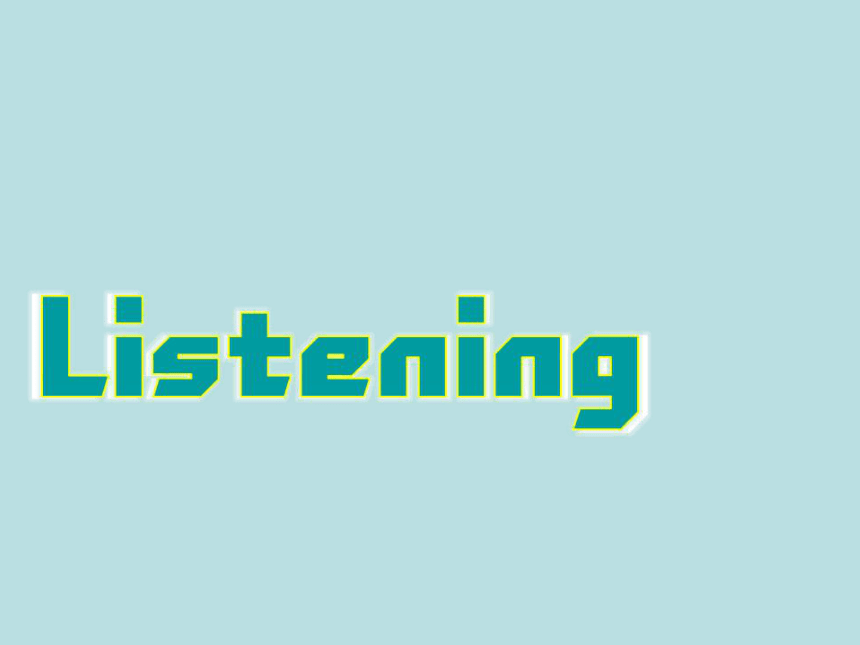
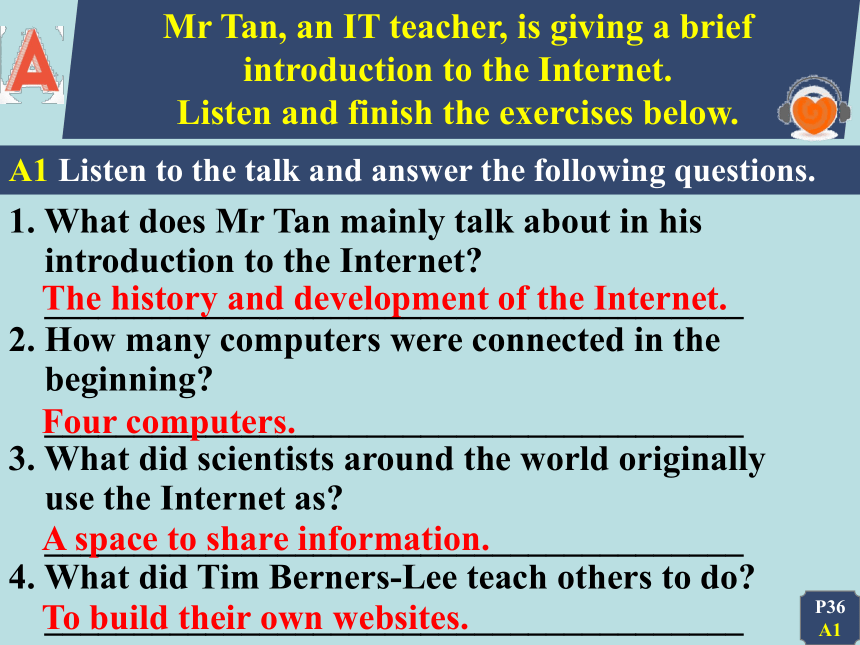
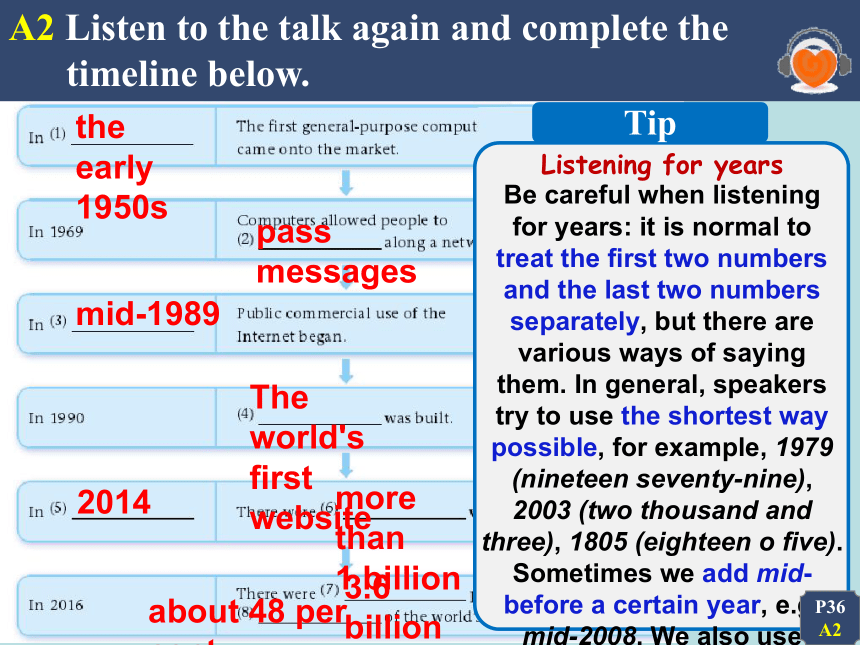
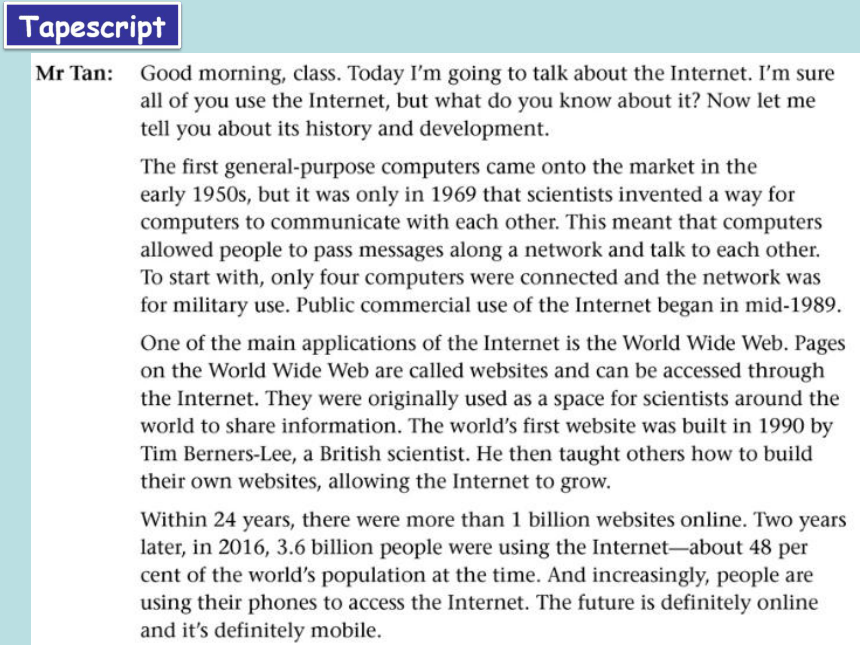

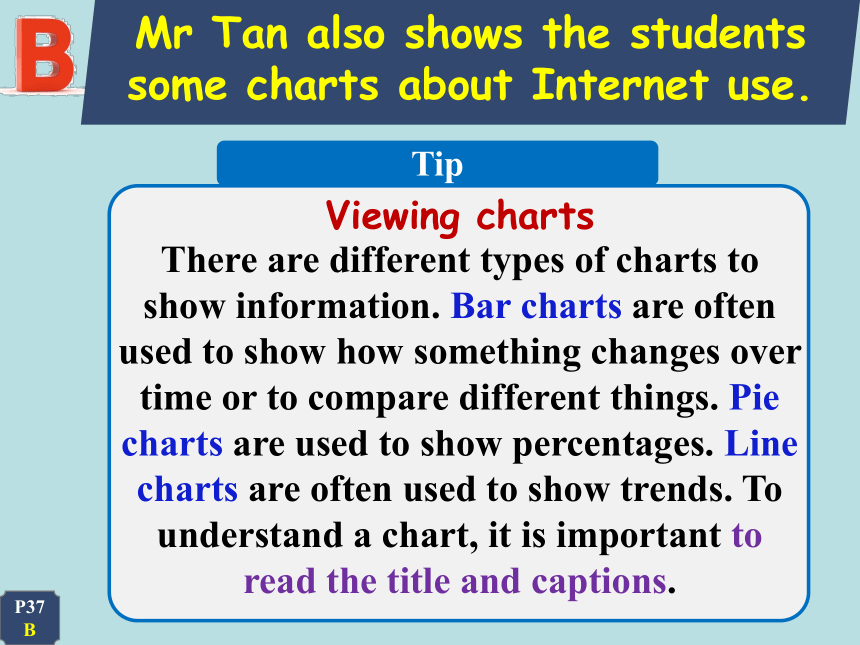
文档简介
(共20张PPT)
percentage
entertainment
mobile
device
n. 百分率,百分比;提成
n. 娱乐活动;招待,娱乐
adj. 可移动的,非固定的;
行动方便的;流动的
n. 手机
n. 设备,仪器;手段,技巧
Read after the tape and speak out the Chinese immediately.
Unit 3
The world online
P4
Integrated skills
- Reporting on Internet use
How often do you use the Internet
How can you get access to Internet
Now, let's follow Mr Tan to learn more about the Internet.
1. What does Mr Tan mainly talk about in his
introduction to the Internet
_______________________________________
2. How many computers were connected in the
beginning
_______________________________________
3. What did scientists around the world originally
use the Internet as
_______________________________________
4. What did Tim Berners-Lee teach others to do
_______________________________________
A1 Listen to the talk and answer the following questions.
Mr Tan, an IT teacher, is giving a brief introduction to the Internet.
Listen and finish the exercises below.
P36 A1
The history and development of the Internet.
Four computers.
A space to share information.
To build their own websites.
A2 Listen to the talk again and complete the
timeline below.
Listening for years
Be careful when listening for years: it is normal to treat the first two numbers and the last two numbers separately, but there are various ways of saying them. In general, speakers try to use the shortest way possible, for example, 1979 (nineteen seventy-nine), 2003 (two thousand and three), 1805 (eighteen o five). Sometimes we add mid-before a certain year, e.g. mid-2008. We also use expressions like the early/late 1980s.
Tip
P36 A2
the early 1950s
pass messages
mid-1989
The world's first website
2014
more than
1 billion
3.6 billion
about 48 per cent
Mr Tan also shows the students some charts about Internet use.
Viewing charts
There are different types of charts to show information. Bar charts are often used to show how something changes over time or to compare different things. Pie charts are used to show percentages. Line charts are often used to show trends. To understand a chart, it is important to read the title and captions.
Tip
P37 B
View the chart below and answer the question.
1. According to the first chart, which use of
the Internet has increased the most during
the last five years
Travel booking.
P37 B
View the chart below and answer the question.
2. What change can you see from the two pie
charts
Possible answer:
More and more people have been going online using mobile devices.
P37 B
View the chart below and answer the question.
3. In the third chart, what change do you
notice in the Internet users above 59
Possible answer:
An increasing number of people above 59 use the Internet now.
P37 B
In pairs, talk about Internet use.
Use the following questions and expressions to help you.
How has the Internet developed over the years
How has Internet use changed in the past five years
What do you think the future of Internet use will be like
Expressions
Talking about changes
There is a rise/an increase/a drop of … per cent.
The number has risen/increased/dropped/decreased
from … to …
The figure has gone up/gone down/fallen by … per cent.
… times as many people went online using mobile
devices … years ago.
The figure/number/percentage remains/stays the
same/unchanged.
P38 C
Write a report on Internet use. Use your ideas from part C and the information in parts A and B to help you.
Planning your writing
Learning about the text type
A report is a piece of writing that provides information in a formal e to a conclusion based on facts and figures and avoid giving personal opinions when analyzing a situation.
Learning about the structure
To write a report on Internet use, you can follow the structure below:
Briefly introduce the history of the Internet.
Clarify the recent changes on Internet use.
Predict the future of Internet use.
Learning about the language
Use simple and plain language to present your information in a clear and correct way. You can also include facts or statistics in your information.
P38 D
Checking your writing
Remember to check your writing after you finish and exchange drafts between you and your partner.
Pay attention to the following aspects:
Punctuation Spelling Grammar
Choice of words Style (formal/informal)
Structure
Self-review
What changes do you list
in your report Are the
changes well supported by
evidence
Which part of the report is
the hardest for you to write
Peer review
Which part of the report
does your partner think
needs further
improvement
How can you improve
your writing
1. Finish the Integrated
skills part in Learning
English.
2. Preview Extended
reading on pages 39-40.
percentage
entertainment
mobile
device
n. 百分率,百分比;提成
n. 娱乐活动;招待,娱乐
adj. 可移动的,非固定的;
行动方便的;流动的
n. 手机
n. 设备,仪器;手段,技巧
Read after the tape and speak out the Chinese immediately.
Unit 3
The world online
P4
Integrated skills
- Reporting on Internet use
How often do you use the Internet
How can you get access to Internet
Now, let's follow Mr Tan to learn more about the Internet.
1. What does Mr Tan mainly talk about in his
introduction to the Internet
_______________________________________
2. How many computers were connected in the
beginning
_______________________________________
3. What did scientists around the world originally
use the Internet as
_______________________________________
4. What did Tim Berners-Lee teach others to do
_______________________________________
A1 Listen to the talk and answer the following questions.
Mr Tan, an IT teacher, is giving a brief introduction to the Internet.
Listen and finish the exercises below.
P36 A1
The history and development of the Internet.
Four computers.
A space to share information.
To build their own websites.
A2 Listen to the talk again and complete the
timeline below.
Listening for years
Be careful when listening for years: it is normal to treat the first two numbers and the last two numbers separately, but there are various ways of saying them. In general, speakers try to use the shortest way possible, for example, 1979 (nineteen seventy-nine), 2003 (two thousand and three), 1805 (eighteen o five). Sometimes we add mid-before a certain year, e.g. mid-2008. We also use expressions like the early/late 1980s.
Tip
P36 A2
the early 1950s
pass messages
mid-1989
The world's first website
2014
more than
1 billion
3.6 billion
about 48 per cent
Mr Tan also shows the students some charts about Internet use.
Viewing charts
There are different types of charts to show information. Bar charts are often used to show how something changes over time or to compare different things. Pie charts are used to show percentages. Line charts are often used to show trends. To understand a chart, it is important to read the title and captions.
Tip
P37 B
View the chart below and answer the question.
1. According to the first chart, which use of
the Internet has increased the most during
the last five years
Travel booking.
P37 B
View the chart below and answer the question.
2. What change can you see from the two pie
charts
Possible answer:
More and more people have been going online using mobile devices.
P37 B
View the chart below and answer the question.
3. In the third chart, what change do you
notice in the Internet users above 59
Possible answer:
An increasing number of people above 59 use the Internet now.
P37 B
In pairs, talk about Internet use.
Use the following questions and expressions to help you.
How has the Internet developed over the years
How has Internet use changed in the past five years
What do you think the future of Internet use will be like
Expressions
Talking about changes
There is a rise/an increase/a drop of … per cent.
The number has risen/increased/dropped/decreased
from … to …
The figure has gone up/gone down/fallen by … per cent.
… times as many people went online using mobile
devices … years ago.
The figure/number/percentage remains/stays the
same/unchanged.
P38 C
Write a report on Internet use. Use your ideas from part C and the information in parts A and B to help you.
Planning your writing
Learning about the text type
A report is a piece of writing that provides information in a formal e to a conclusion based on facts and figures and avoid giving personal opinions when analyzing a situation.
Learning about the structure
To write a report on Internet use, you can follow the structure below:
Briefly introduce the history of the Internet.
Clarify the recent changes on Internet use.
Predict the future of Internet use.
Learning about the language
Use simple and plain language to present your information in a clear and correct way. You can also include facts or statistics in your information.
P38 D
Checking your writing
Remember to check your writing after you finish and exchange drafts between you and your partner.
Pay attention to the following aspects:
Punctuation Spelling Grammar
Choice of words Style (formal/informal)
Structure
Self-review
What changes do you list
in your report Are the
changes well supported by
evidence
Which part of the report is
the hardest for you to write
Peer review
Which part of the report
does your partner think
needs further
improvement
How can you improve
your writing
1. Finish the Integrated
skills part in Learning
English.
2. Preview Extended
reading on pages 39-40.
同课章节目录
- Unit 1 Nature in the balance
- Welcome to the unit
- Reading
- Grammar and usage
- Integrated skills
- Extended reading
- Project
- Unit 2 Natural disasters
- Welcome to the unit
- Reading
- Grammar and usage
- Integrated skills
- Extended reading
- Project
- Unit 3 The world online
- Welcome to the unit
- Reading
- Grammar and usage
- Integrated skills
- Extended reading
- Project
- Unit 4 Scientists who changed the world
- Welcome to the unit
- Reading
- Grammar and usage
- Integrated skills
- Extended reading
- Project
